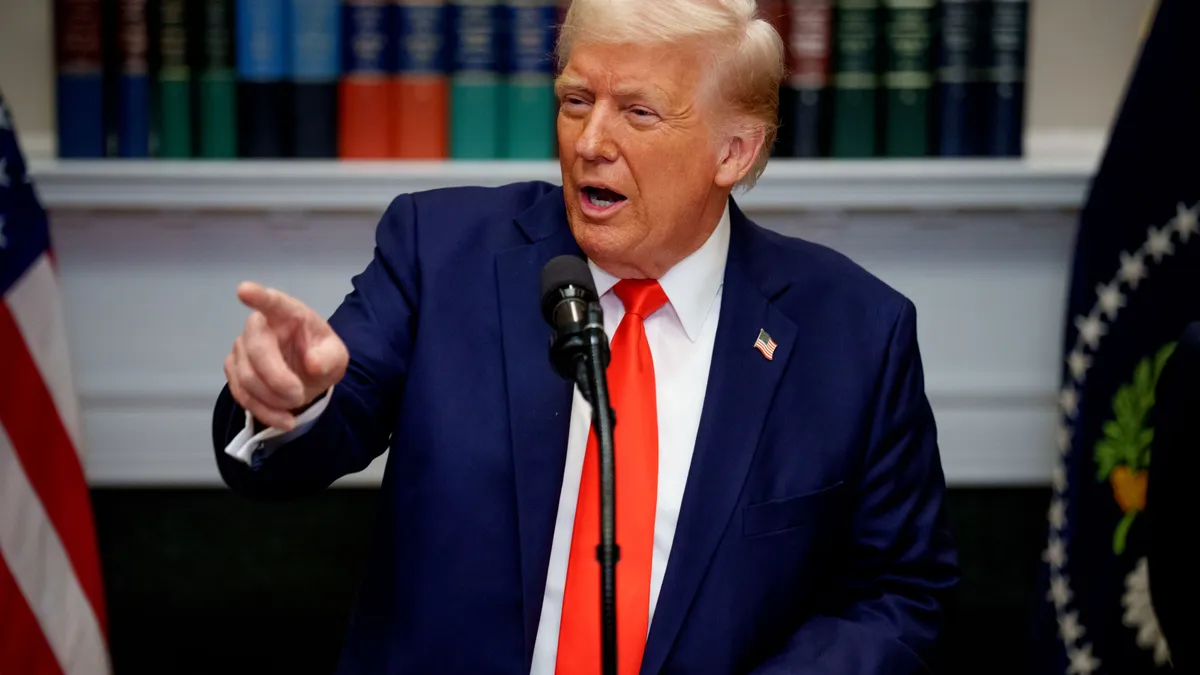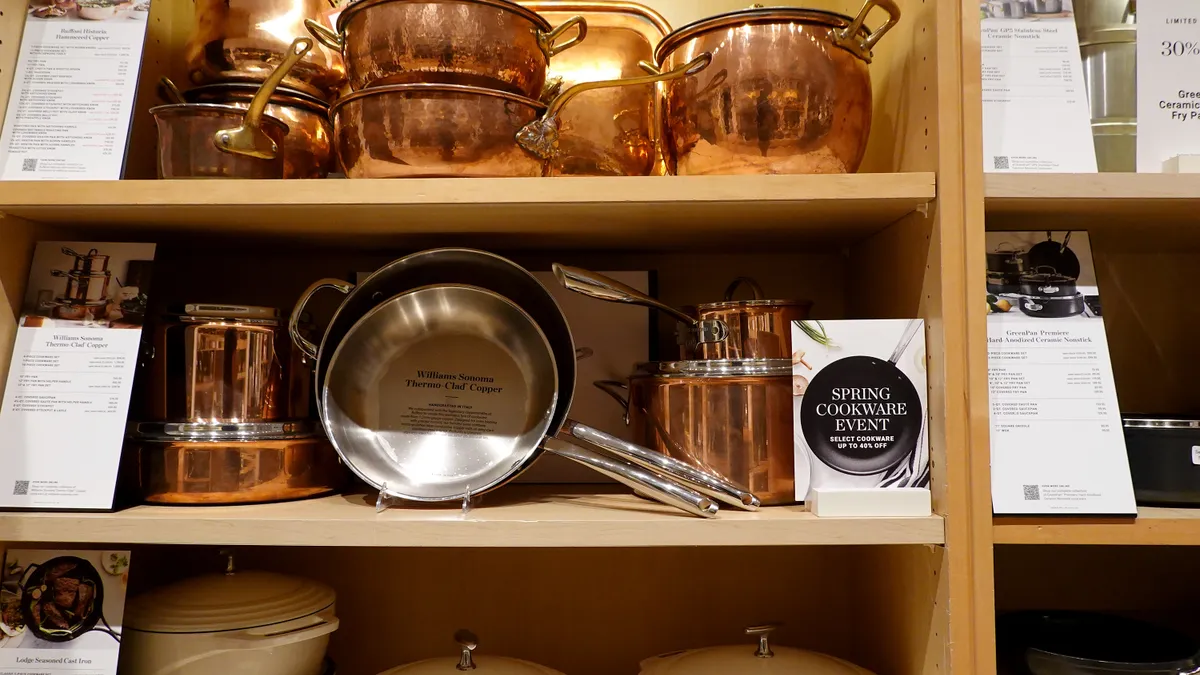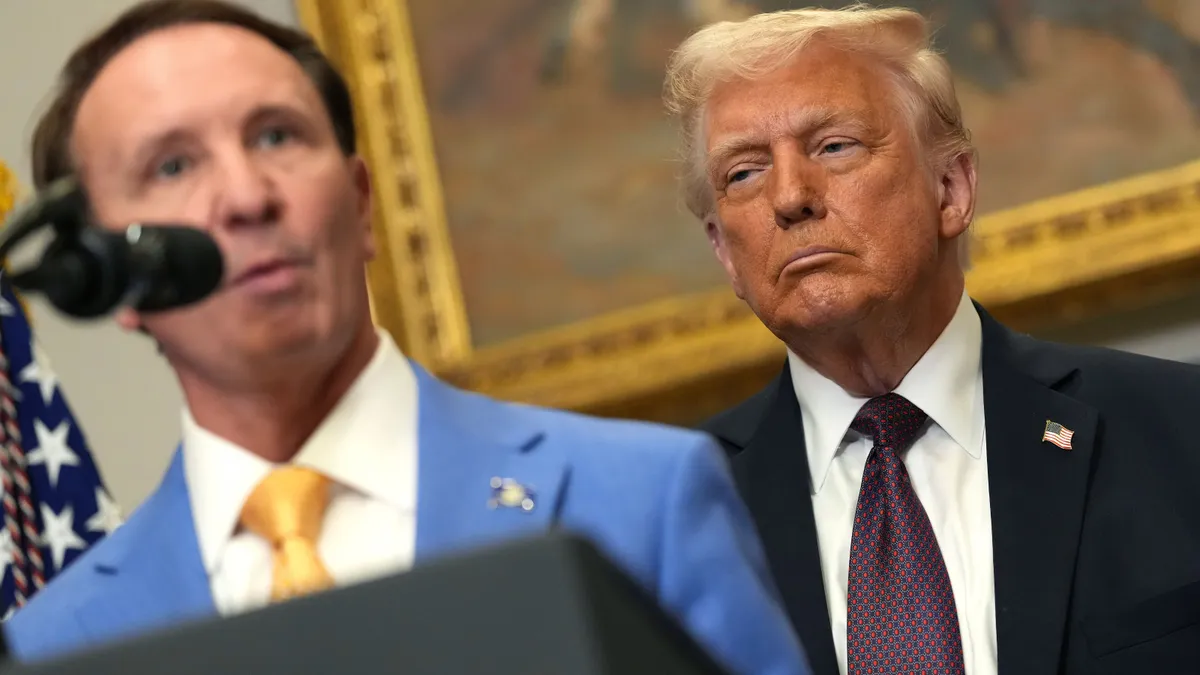Gojo Industries, which makes Purell, builds automated hand sanitizer dispensers in the U.S. The devices rely on an electronic input made in China. But in early March, the U.S. Trade Representative (USTR) turned down Gojo's tariff exemption request for the specific part needed for its dispensers, just before President Donald Trump declared a national emergency due to COVID-19.
The government later reversed its decision and waived the tariff after a senator from Ohio, where Gojo Industries is based, pressured the USTR because of the product's importance to public health.
But several months into the COVID-19 pandemic, many consumers still struggle to find public-health-related products, from hand sanitizer to wipes. There’s also a shortage of personal protective equiptment (PPE) in the United States, and some of it is still subject to tariffs, throwing a wrench into pandemic preparedness and response.
Health supply chain experts sound the warning bell
The healthcare industry warned the Trump administration long before COVID-19 that imposing tariffs on Chinese-produced essential healthcare products put the nation’s public health preparedness at risk.
In August 2018, Matt Rowan, president of the Health Industry Distributors Association (HIDA) told the U.S. Trade Representative (USTR) 301 Committee that products on the proposed list were widely used in healthcare settings and "are a critical component of our nation's response to public health emergencies, such as Ebola."
Tariffs on items like masks, medical gloves, isolation gowns and wet wipes would not only increase U.S. healthcare costs, but impact government and commercial suppliers supporting patients and providers during a medical crisis, the industry warned.
"We did not make up for the lack of imports from China by more imports from the rest of the world."

Jennifer Hillman
Senior fellow for trade and international political economy, Council on Foreign Relations
Disrupting this supply chain would erode the industry's ability to deliver quality outcomes, and "placing tariffs on these products would lead to product shortages and further exacerbate public health challenges during times of crisis. It would significantly limit the ability of all levels of government, as well as the commercial healthcare supply chain, to adequately support response efforts during emergency events," Rowan said.
In spite of healthcare industry testimony, the U.S. slapped 15% to 25% tariffs on many of these essential healthcare items. That included 25% Section 301 tariffs on items like disposable medical headwear, hand sanitizers and pulse oximeters. It included 15% Section 301 tariffs on medical protective clothing, protective goggles, and Nitrile and sterile gloves.
In 2018, the American Action Forum estimated if import numbers remained consistent, medical supply costs would rise by $400 million.
"A good portion of the reason why we are in such a difficult position is imports of those products went way down once those tariffs were imposed on China," Jennifer Hillman, senior fellow for trade and international political economy at the Council on Foreign Relations, told reporters on a press call. "Our traditional stockpiles, the amount that we had just in storage, by FEMA, by Veterans Affairs, by HHS, and by a lot of state and local hospitals, they decreased the amount of their imports and decreased their stockpiles because of the tariffs."

In placing the tariffs, one Trump administration goal was for buyers to procure items from other countries or manufacture in the U.S. instead. And that happened, but not to the extent necessary to maintain the stockpiles.
"We did not make up for the lack of imports from China by more imports from the rest of the world,” Hillman said. China was the largest exporter of medical face masks globally, accounting for 25% of the world’s supply in 2019, according to the World Trade Organization (WTO).
The U.S. was the largest medical products importer during the last three years, with 19% of total world imports of these products in 2019, according to the WTO. Personal protective products (including face masks, hand sanitizer and protective eyewear) made up 10% of U.S. medical imports. Worldwide trade of products labeled "critical" and in severe shortage during the pandemic, included 1.7% of the total world trade for 2019, totaling $597 billion. The U.S. imported $5.2 billion in medical equipment in 2019.
The time-consuming exemption process
Trump refused a blanket exemption for medical products when COVID-19 hit, but did grant some exemptions retroactively to Sept. 1, 2019, through Sept. 1, 2020, on supplies like sterile drapes, disposable gowns, some face masks and disposable shoe covers. The government granted exemptions in executive orders on March 10, March 16 and March 17.
"They issued over 200 exclusions from the tariffs, with more than a hundred of these items are the ones that were needed for medical devices and to fight COVID," said Hillman.
Still, $1.1 billion worth of healthcare imports that could be used for treating COVID-19 remain subject to the 25% tariffs, according to a report by Chad P. Brown, senior fellow at the Peterson Institute for International Economics. Tariffs from another $3.3 billion of critical healthcare product imports were lowered from 15% to 7.5%.
General Motors (GM), partnering with Ventec to produce ventilators under the Defense Production Act, needed to source more than 700 components for the new machines. While GM could obtain most from North America, it sourced components from a handful of categories from China, which fell under a 25% tariff. They included grommets, filter parts, compressor silencers and a power cord set. GM requested exclusions from the USTR for individual parts.

These types of requests are time-consuming, especially when efforts might be better spent on other priorities during this crisis, according to legislators. Senators on both sides of the aisle pointed this out in an April letter to U.S. Trade Representative Robert Lighthizer, saying "[companies] should not be subjected to the lengthy process of submitting tariff exemption requests for each individual input required to make products essential for addressing the ongoing pandemic.”
Tethered to China
Procuring from outside of China can alleviate the risk of single sourcing and increased costs from tariffs, but it's not always possible due to availability of raw materials, FDA clearance or production capabilities,
In June 2019, Lara Simmons, Group President of Medline Industries, explained to the USTR why a manufacturer wasn't easily able to source many of its healthcare products, like gloves, outside of China. She said 97% of vinyl gloves come from China.
"These products are not made in the United States and some of these products are effectively available only from China. Starting production in the U.S. or any third country would be a time-consuming expensive process due to the FDA regulatory procedure that is required for these products," she said.
The process for FDA regulated Class I and Class II medical devices can take more than two years, she said, and includes development and installation of environmental controls, facility upgrades, equipment purchase, installation, process validation and multiple rounds of audits to ensure regulatory compliance and verification of the quality system effectiveness.

Even gloves used for hospital cleaning and industrial food prep are in short supply, sending buyers back to China in spite of high tariffs.
Minnesota-based Global Glove & Safety Manufacturing applied for a tariff exemption for unsupported gloves (rubber gloves without a fabric lining), which are subject to a 25% tariff. The company's clients that traditionally use disposable supported gloves can’t keep those in stock and are now using unsupported gloves.
"Once stability is achieved in the marketplace, we won’t buy from China for unsupported gloves, especially because of the tariffs."

Tanner Brehmer
Product development manager, Global Glove & Safety Manufacturing
Global Glove typically buys from producers in countries including Malaysia, Sri Lanka and Thailand, but due to lockdowns and limited production in those countries, it's trying to source some from China. "It’s tough because nothing is really shipping and lead times are pushed out so far. We don’t know when we’ll get it from other countries," Tanner Brehmer, the company’s product development manager, told Supply Chain Dive.
The 25% tariff on the gloves produced in China greatly increases the cost, yet China is one of the only countries producing these products at full speed, he said. So in spite of tariffs, his company may move some procurement back to China. "Once stability is achieved in the marketplace, we won’t buy from China for unsupported gloves, especially because of the tariffs," Brehmer said.
A diversified future?
Lighthizer and the Trump administration has a long-term vision for the tariffs. "Indeed, if there is one lesson to be drawn from this crisis, it is that dependence on other countries as the source of key medical products has created a strategic vulnerability for the U.S. By encouraging diversification of supply chains and—better yet—more manufacturing in the U.S., President Trump’s economic and trade policies are helping to overcome that vulnerability," Lighthizer wrote in the The Wall Street Journal.
As healthcare systems sourced PPE and other supplies to treat COVID-19, they often paid the tariffs if needed, even if that meant paying more for the products. Healthcare systems and the government also purchased from manufacturing companies converting their domestic factories to produce needed items for COVID-19 treatment.
"We need a more resilient supply chain, which means we need to have multiple sources of supply."

Jennifer Hillman
Senior fellow for trade and international political economy, Council on Foreign Relations
Which of these production lines will continue when the acute need for PPE is over, is hard to know. However, healthcare systems are now more aware of the risk in relying on foreign sources for their supplies.
"We need a more resilient supply chain, which means we need to have multiple sources of supply rather than sole sources of supply, and we need to do a better job of creating stockpiles," said Hillman. “Part of the reason why we’re in such a world of hurt is because of our stockpiles were allowed to be depleted, again, in response to these tariffs."





















